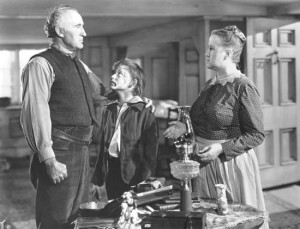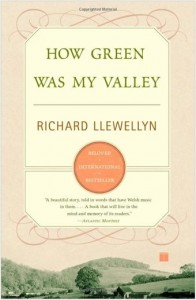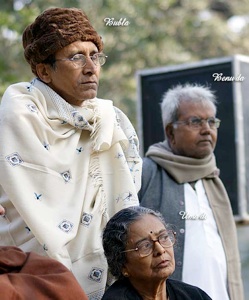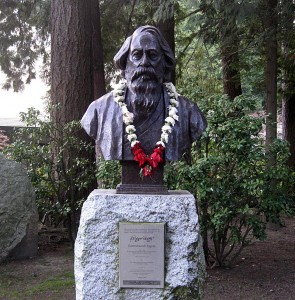“They have remained invisible throughout history. But in my life, their absence have been a heavy weigh on my mind” Neil observed.
They had crossed the 100th Avenue, the main artery of the town, and walking north towards the bend in the Kicking horse river.
Less than a mile to the north-west of them, the kicking horse river met with the Columbia river. These were historically important rivers of southern British Columbia. The province got its name from one. But it was the kicking horse that also fascinated Neil. These rivers and the history attached to them, represented fascinating chapters in the recent past – the formative years that would eventually define modern British Columbia, or indeed Canada.
They approached the bend of the Kicking horse a football field away, over a small grassy park. The park ended at the river bank. Across the small mountain river flowing westward to its end of journey to meet up with the Columbia river, were the tall peaks of the Rockies in the north and northwest, the beginning of Yoho National park.

They could see the rising line of the national highway, Trans Canada Highway, across the river, snaking its way along the valley of the kicking horse, heading east and north. They were going to be on that road tomorrow, heading towards the even smaller town of Field, which was the base camp of Mr. Walcott a century ago, when he discovered the unprecedented fossils of the soft bodied creatures of the Cambrian explosion at the Burgess Shale fossil bed.
Mabel wrapped her arm around his waist. They were by now standing at the bank of the river, which had cut a channel for itself through a frozen river bed.
“What was invisible, in the Paleozoic? And how is Canada both rich and poor with regard to the invisible?”
Mabel had a good memory of things Neil said in bits and pieces which did not always connect up to complete the jog saw puzzle. And she liked working with jig saw puzzles. He was talking, as they crossed the main road heading north, about the invisible explosion of the Paleozoic which left a silent trace in the records of an expanding life form on this planet, and how Canada was both rich and poor in preservation of that history.
Neil lifted his cap and ran his fingers through his hair. The temperature was above freezing. There was no perceptible wind. It was the beginning of April and the air was just fine, with a tinge of cold. It felt good on his face and it felt good to be standing by the water’s edge at the western border of Yoho National Park and the Rockies.
Mountains were all around them. To the west should be the Cascade mountains. To the east, were the Rocky mountains. Not being a geologist, or a geographer, he did not know where exactly the Cascade mountains ended and the Rockies began, but he could make a guess. The Cascade mountains, he knew, were essentially volcanic, and came up relatively recently through tectonic forces that were still actively pushing the oceanic plate under the land of the west coast, and had been the cause of seismic and volcanic activity all along the western shores of North America in the recent centuries, from California all the way to British Columbia. The Rockies on the other hand had been thrust up gradually over hundreds of millions of years, representing changes in the planets arrangement of its landmass over eons of time, that had resulted in pushing up the shallow ocean bed of a tropical sea, inch by inch and millennium by millennium, from under the sea near the equator, to high above the ground, in the northern latitudes of present day British Columbia.
In short, one might find basaltic formations in the Cascade mountains, while at the Rockies one should find sandstone, shale and rocks formed through accumulation of sedimentation in the watery depths of the past.
And it was here, in those shallow sediments, where the invisible part of early life lefts its ghostly traces that was a story of both comedy and a bittersweet tragedy for Canada. This is how Neil perceived it anyhow.
“Paleozoic stood for the ancient era of single cell primordial creatures that evolved in the murky past, the early billions of years of earth’s history.”
Mabel nodded, watching a dipper applying its trade in the shallow but fast flowing water of the Kicking Horse. The bird, the size of a robin but having an all over darker shade, had special claws that allowed it to grasp the algae and moss on rocks under flowing water and hunt for insects underwater. It could apparently swim under water too. It would dip under the surface at one point, and often emerge at another. Neil had mentioned that this apparently terrestrial perching bird has specialized itself into being an insect eater of the fast flowing cold rivers of this land, thus occupying a niche left vacant by the water birds of North America. She had since developed a fondness for this small tireless worker of the shallow, fast flowing cold white water rivers of Canada and the US.
“I think paleo means old, in Greek or Latin. When did this era end and what was the explosion about? And what is invisible and why is the story bittersweet for Canada?”
“Ohh, that” Neil observed. “I was coming to that. Do you feel like sitting down on that boulder by the water? It is so nice here, and so quiet.”
Mabel nodded. As they sat on a large but cold stone, there was a mechanical noise behind them. They turned to look, and saw two teenagers going over dry grassy ground driving their tracked snow mobile, heading for what looked like a barn or a shed in the distance. The sound was unpleasant. It left a faint smell of engine exhaust in the air.
“I think the season for winter sport is coming to an end” She observed. “Soon, as the snow melts, we shall have the season of the summer activities – hiking, rock climbing, and such.”
Neil nodded, “The ‘and such’ should also include exploration of what is left of the fossil bed of the Cambrian explosion, at the Burgess Shale. And there lies the bittersweet history of another aspect of Canada.”
“Explain.”
Neil watched a second dipper arrive at the water. He pointed at it and smiled at Mabel.
“Yes, I saw the first one. Amazing bird.”
“Yes indeed. Had Charles Darwin seen it, he would have gotten one more beautiful living example of evolution at work. Throughout history we have seen species cross over from their original habitat and enter a world they were perceived not to be suited for. Land mammals entered the water and became whales and dolphins. Birds entered the southern ocean and became penguins. Small animals went burrowing underground and lost their eyes. Large bears got to the northern ice covered ocean to hunt seals, went totally white with their fur and evolved webs on their toes to swim better, and here we have a tiny bird, the dipper, that dips under fast flowing cold waters and does not get swept away. It insulates itself from the cold and the wet, and is agile enough to grab insects underwater in fast flowing rivers in that condition. Nature working its magic here.”
Mabel smiled. She just loved to hear Neil speak. It had been thus for the last six years, ever since she first met him. She was a sixteen year old teenager at the time. She had never met anybody like Neil before. That first day, at her uncle’s place, he had mentioned the controversy of the origin and spread of Maize, and its fascinating link with the stone carvings of a west Indian temple that showed corn. She was fascinated by the story of that temple, built centuries before maize was supposed to have been discovered by the European early explorers of the Americas.
She had developed a teenage crush on him at the time. She was no more a teenager, but the crush had endured. She was going through a high right now, since the feeling was finally being reciprocated.
She still needed to nudge him, to get him back on track. “So what is bittersweet about the Paleozoic explosion, for Canada?”
Neil pulled her closer. “Paleo may mean old, but each of the eras had a trigger that destroyed and yet created. It shut out one kind of creatures and opened the door for another. The Cambrian explosion was such a remarkable event. It did not destroy, but did the opposite. It triggered an unprecedented explosion of new life forms. It coaxed the slow engine of evolution on to the fast lane for some unknown reason. Suddenly, out of simple small unicellular animals and tiny multiple celled arrangements rose a vast marine world of a myriad kids of larger creatures. Most of these were soft bodied, but not all. The first of the marine creatures with hard external shell, the trilobites, too emerged, as a new family of now familiar early marine creatures of the Cambrian.”
“Wow”
Neil nodded and leaned back on the rock, stretching his legs on the cold stone.
“And you feel strongly connected to about that period, and how the mountains of Yoho link to it. Yes?”
Neil nodded again.
“I feel related. That is one part. I feel sorry that many of the best fossils of the Burgess Shale might no more be in Canada any more, having been transported to the Smithsonian by Walcott, a century ago. That is the bittersweet part of it from my point of view.”
“How did that happen? I mean the fossils ending up outside of Canada? All the fossils or only some of them?”
“I shall tell you the story as I know it. The best of the fossils found at the time by Walcott, to searched and located the main vein of the fossil bed, which was merely seven or eight feet wide and a few hundred feet long, into the mountain slope. He dynamited it till the vein was exhausted, and chose the best of the best fossils to take to the Smithsonian. Sixty thousand of them in fact.”
“What?”
Neil nodded. “Yeah. Its true. I read about it. There are still fossils coming up there, but unless Canadians found another vein like that one, we are never going to find another fifty or sixty thousand unique fossils of that unique time again. Walcott did that. Great work indeed, but – you have to go to the Smithsonian to see it.”
Mabel thought about it. “Perhaps we should visit the Smithsonian together.”
“Perhaps.”
Mabel stretched her legs too. It was perhaps just as good that the fossils survived, even if it was across the border. She did not consider Americans to be too different than Canadians. Being a liberal at heart, she wished the Americans would be less involved with wars in remote places and more concerned about their own poor. But other than that, Americans were fine people, in general. Everyone in every land was fine, more or less, in her book.
It was also fine, to be sitting with Neil right now. In fact, it was more than that. It felt wonderful, to be able to spend a few days away from work, away from Vancouver, and away from the rest of mankind, just spending time with Neil. It was the first time they were doing this together. Some years ago they had gone with a bunch of others to a fishing trip in the lakes, but at that time, Mabel was a sort of silent observer of Neil, who hanged around more with her cousin brothers. He shared a log cabin with them, while she was with her folks in another cabin.
This time, they were an item. It was established, more or less. She did not know if Neil was seeing other women. She could not come around to ask Neil about it. Neil rarely spoke of women anyway. But as far as she knew, and she did know Neil a bit, he never went out with another woman for a four day trip into the mountains, or any place else, in British Columbia. She had no idea what he might have done while living in the US, or back in Hong Kong or India.
Besides, they were sort of seeing each other now. They slept together often. Actually, it was only about four times in the past two months. But, that was a start – a great start.
Mabel wondered when he might ask her to move in. Unfortunately, Neil was not known to talk about personal matters much. She wondered if she should sort of coax him on to the subject. She did not wish to rush him though. She knew he found it still a bit odd that she was so much younger than him. He still felt she deserved someone younger. That was rubbish, but Neil was old fashioned, she guessed.
“What are you thinking?” Neil glanced at her.
Mabel thought of telling him she was thinking of him, as much as what he was talking about. But she could not find the right words. “I was thinking about those sixty thousand fossils, but more than that – how you might be related to all that.”
“Well, the Cambrian explosion apparently produced all the families of living creatures of today, as well as a few more that are no more with us. It also had the first rudimentary vertebrate, could well be my likely direct ancestor going back half a billion years.”
Neil laid back on the cold stone, and cupped the back of his head in his hands. Above him swayed the near nude branches of a tree that was just now deciding to sprout new leaves of spring. The sky was partially exposed and free of clouds. It contained the signature deep and clear blue of the British Columbia skies, free of air bound particles of pollution and haze. His thoughts wandered back on his favorite topic – his relationship with the cosmos.
“You see, I feel related not just with those creatures of the Cambrian explosion, that Walcott discovered north of the town of Field here in the Yoho national park of today. I feel related also to the silent people that traversed the landmass of this planet long before modern man started etching his footprint more firmly on the landscape, thus turning his presence more into a scar than a track. Animals leave tracks. Early humans left tracks. Modern man leaves scars. Anyhow, I feel related, to those early humans. More than feel, I now know I am related.”
Mabel laid back on the stone next to him and turned on her side, reaching out to move a strand of hair out of his eyes. Neil was different than other men she met. He had the least worry about his appearance. He was about the only man she knew who tried cutting his own hair. The reason he preferred to cut his own hair, or have a friend do it for him at home, was itself unique. He considered going to the saloon and sitting before the barber for twenty minutes when he could not read a book or listen to music or glance at his iPad or do anything other than close his eyes and listen to the snip of the scissors or the electric hair trimmer – a torture. He did not care that the barber might do a lot better job of making him look good. As long as hair grows constantly, whatever the barber does is momentary. In a few days, the hair would continue to grow and assume a natural appearance that was his own. Anyhow, Mabel knew about this little secret of Neil because she had once seem him do a bad job of trimming his hair at the back of his head, and she did it for him. He even thought she’d make a good barber.
“And how do you know you are related to the early people?”
Neil’s face broke into a cheeky grin. “I got a note from the Gene lab recently. My second set of DNA analysis on my mitochondria is over. The result confirms the earlier test, that I most certainly contain two key haplogroups, “M” and “D”. These are sure signatures that on my mothers side, I am very closely related to the indigenous people of Indochina, Australasia as well as the entire north and south American continents and its First Nation people.”
“Really ? Wow. What does those Hapless groups mean anyway ?” Mabel purposely teased him a bit about the terms he used, which might be technically right, but far away from normal folks daily conversation.
“Haplogroup. Nothing hapless about them. I shall one day tell you, or perhaps show you the tree of life when it comes to the evolution of the mitochondrial DNA. But trust me, I might not be an aboriginal person myself, and neither was my mother, or my grand mother, or her grand mother. But, we share a genetic mutation that happened just before a group split away from the rest of the still nomadic population, somewhere in Asia, and went migrating as the first great explorers, generation by generation, hopping island after island, occupying the known lands of Australasia. Once they were there, in those remote islands and jungles, they were cut off from the main gene pool and evolved separately, eventually occupying a separated branch of humanity. They are known today as the indigenous tribes of various places. But they carried that mutation, haplogroup M with them, so that its prevalence in those communities today is very high.
But those that did not go to those remove places, did not evolve separately, and continued to mingle with the rest of the mainland crowd, thus evolved with the main branch. They eventually ended up looking and behaving a bit differently than those isolated populations. Eventually agriculture and animal husbandry reached them first and along with it, a change in lifestyle from hunter gatherer to pastoral and farmer. That brought a rapid change of diet and a rapid rise of population, eventually also leading to rapid rise of a new lifestyle, a civilization, complex language with a larger vocabulary etc. But a smaller slice of these people were part of that group that had the mutation in their genes, the “M” haplogoup. But they were mixed with the larger group that included many others that did not contain that M marker. So, the present non-tribal population has much less people with this particular mutation. These small number of people that carry the same mutation evolved and mixed with the general population, and hence look, feel and behave the same as the rest of the large body of humans. But, they carry in them the tell tale signature of being the most recent cousins of the Australasian and Indonesian and Andamanese aboriginal people and the Indian, Chinese and other Eurasian tribal groups, among the first people of Eurasia.”
“Wow”.
“Yes. Indeed. But that’s not all.”
“No?”
Neil shook his head. “Nope. After the ‘M’, another mutation came up in the same group of people, leading to the ‘D’ haplogroup.”
He turned to Mabel and assumed a mysterious look on his face. “And do you know what happened to this new group of people with the’M’ and ‘D’ in their gene ?”
“What ?” Mabel could feel the sense of adventure, tracing the early footsteps of man through the world map, through the voice and personal observations of Neil. There was just nobody she knew that was even remotely similar to Neil. He was a unique mutation all by himself, she felt. But she did not interrupt him.
“This ‘D’ holding group also split. And the wandering spirit remained in them. One branch of them went on to cross more land bridges and ended up in North America, and then to South America, colonizing the Americas as well. IN the US, they are called American Indian. Here, you call them first nation. And I, my dear Ms Richardsen, contain both the ‘M’ and the ‘D’ haplogroups in my mitochondria, inherited in a direct maternal ancestral line going from my mother, to grandmother, all the way to fifty, sixty or eighty thousand years ago when all this was happening.”
“Double wow”
“Yes. Therefore, I have genetic proof to substantiate my feeling of closeness, that I am related, to the first explorers of our species, people that left those invisible tracks on the ground in all the landmasses that could be reached by early man, including in Canada. And they did it very long before Columbus. Very long indeed.”
Mabel could not help being amazed. He had explained part of it to her before, though it had not fully filtered in for her. She was still unsure of mitochondria and tracing of ancestral movements through DNA mutations. But she was beginning to understand.
“It must feel great, to be related to the whole world” She mused.
Niel considered the statement. “You know, those few markers in my DNA that I inherited from my maternal side, as well as the details I have so far found from my father’s side, helps me understand my roots and my anchors better. It has essentially freed me from narrow boundaries. Its like that poem about the two Bigha Zameen.”
“What ?”
“Well, you know about Tagore, right ?”
“Right”
“Well, he did many things. Among them, he also wrote a few poems. One of the early ones was this poem about a small slice of land that a poor man of Bengal once owned as his ancestral plot. He lost it through false accusations of debt to a rich landlord, who wanted that land. So, he was rendered essentially homeless, and became a sort of wandering holy man, traveling from place to place. In that poem, when the man lost ownership of his his ancestral home, Tagore penned a paragraph, that goes like this – I’ll show you.”
Neil got up, and fished out the notebook he always kept in his right hip pocket. “I am never without a notebook, you know?”
Mabel nodded. “I have noticed that, yes.”
“Its a habit I picked up from my teenage years. I have gone through a fair amount of notebooks this way” he smiled, and fished out his pen from his breast pocket, another thing he was always never to be found without.
Then, in the fading light of the evening, keeping his notebook on his thigh, he concentrated and wrote a few lines, which Mabel could not follow, but understood he was writing in his own language. She had come to appreciate the handwriting, although he claimed it was not good enough. The thing is, folks did not write much in long hand any more, even in English. She did not have any relative of friend that had a real neat handwriting. Writing by hand was going extinct, as Neil often said – like the Dodo.
Neil finished writing and showed the notebook to her. She took it and tried to make sense of it.
“What does it mean?”
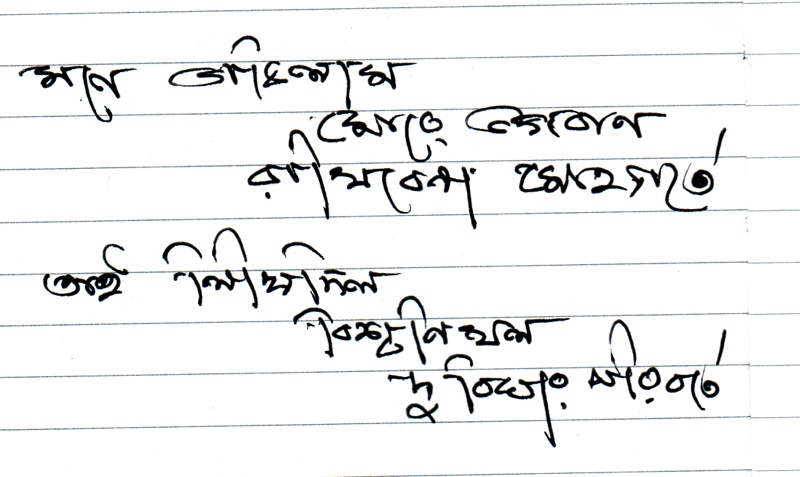
Neil took the notebook back, and slowly repeated what he wrote, apparently in Bengali.
“Money Bhabilam Moray Bhagaban, Rakhibay nah Moha Gortay
Tai Likhee Dilow Bishwa Likhilow, Thu Bighaar Poribortay”
He looked at her and smiled.
She compressed her lips and thought about it.
“Well, it does have some rhyme.”
Neil laughed, pocketed his notebook, and laid back, resting his head again on his palms. He looked up at the emerging stars and translated the few lines in English
“I believed that the almighty did not wish me to have useless attachments to frivolous earthly possessions.
And so, he released me from that sliver of ancestral land, and in exchange presented before me the entire universe.”
“Thats wonderful. What a beautiful expression!” She was genuinely impressed. “I think I should read Tagore sometime.”
Neil nodded. “The problem of reading Tagore might be that if the reader judges them as a work of literature alone, then he or she might miss the underlying tidal current that tugged at the heart of the man, who was, in my eye, more than a poet. That is the basic difficulty of reading Tagore. Most folks might read him as a poet, and that would be a mistake.”
“Well, you can help me, can you not?”
Neil got up again and sat upright. “I am no expert. But those two lines resonates for me. I did not lose any ancestral land, in the sense that I did not have any in the first place. My parents came from stock that were rendered essentially as landless refugees through religious strife fermenting in India for a long time. Their stock moved westward from the waterlogged delta of Eastern Bengal to the drier lands of Western Bengal. IN the east they were religious minority but held most of the land. In the west they ended up among the majority, but without the land. So I grew up without any sense of deep roots. But, thinking back, my growing up all over India, my exposure to Tagore’s writings, my working life all around the world, and now the analysis reports of my genes, they all tend to help me identify with that landless man of that poem of Tagore.”
Mabel snaked her hand in his and looked watched his darkened face in the fading light.
“I have lost my anchor, but gained the universe in exchange” Neil mused aloud.
“And also gained the girl lying on the stone next to you.” She mentally said to herself.
She tried to imagine a time, fifty, or a hundred thousand years ago, and imagine a small band of hunter gathers that might have included a woman that carried a piece of genetic code that was to come down, generation by generation, all the way to Neil’s mother, and then down to him.
“Its amazing. And you being a male, still have that gene from your mother, but cannot pass it on?”
Neil nodded. “This is of course just one way of tracking ancestral lineage through maternal line. All of us, males and females, get the mitochondria from our mother. It was thought to play no direct role in deciding our sex or our traits, since it was not part of the DNA in the nucleus of the cell. I have read papers that claims that mutation in this non-nuclear code of DNA might still affect health of people. For all I know, there may be other ways to track genetic footprints and ancestry through the maternal line. But for now and for me, the links are the M and D type haplogroups in my mitochondrial DNA that makes me related to the first explorers, the tribal and indigenous people of the world – those silent travelers that left a near invisible track on the ground, but a heavy imprint on the trail of human evolution. They were the invisible first explorers, whose descendants today face a dire existential threat, thanks to modern humans need to take their land, their resources and what is underneath their feet. These people with little demands and the faintest of footprints. And we are asking them to move on, and they have nowhere else to go. They are at the end of their rope.”
They lay there, on the stone, and watched the sky get darker and the paler tinge of the slice of sky across the western hills disappear behind the dark outline of the mountains. Somehow, the whole story, Mabel felt, was bittersweet and sad, and somehow leading to a tearful ending, just like those creatures trapped in those sixty thousand fossils that Walcott found a century ago.
A few stars appeared in the fading blue of the sky. The dipper was no more visible in the river. Behind them, the town of Golden had put on their artificial lights, which glowed against the southern sky. It was going to be eight.
She sat up. “Perhaps we should walk that way to the junction of the rivers, before it gets more dark.”
Neil got up too. “Okay, lets do that. We might not get much time tomorrow, as we intend to try to look around the area covered by Walcott a century ago in the Burgess shale tomorrow morning, just a few miles to the east and north of here.”
They walked, arms around each others waist, a new style for them, heading northeast along the bank of the river. They could hear the water, where it joined the Columbia river, perhaps a mile ahead, by the side of the small airstrip that went by the name of ‘Golden Airport’. They crossed what was an unnamed and unpaved road onto another that paralleled ran between the runway and the river, and headed towards the confluence of the two rivers.
It took them a few minutes to reach the point where they could not go further. The Kicking Horse had joined up with the larger Columbia river, and together, the waters turned southwest and downhill. They stood by the shore and watched. A man was walking along the edge of the water with his dog. The night sky still had some light that reflected off the water. They could see the dark shape of the man and the dog in silhouette against the rippling reflection off the water. The breeze was both stronger and colder. They automatically huddled closer, and watched the scene before them as the sky continued to darken by the minute.
Mabel watched the dancing light on the river water, and signed in contentment. Neil heard it and turned to watch her in the dimmed light, bending to kiss her nose. She turned her face and they got into a deep kiss, holding each other.
The dog’s bark got fainter as it and its owner moved further away. The air strip behind them was silent and dark.
An air whistle blew behind them somewhere, from a train.
Neil broke the kiss and looked at her, her eyes looking more black than blue.
He cleared his throat. “We need to find a restaurant”
She nodded imperceptible, and kissed him again. “I love you Neil.”
Neil pulled her closer and chuckled, teasing her. “Is that love, or an infatuation for an opinionated Bengali babu, that talks a lot about nothing?”
“Shut up”. She knew what made a Bengali. But she decided to check up what a babu was. This was not the time though. Whatever it meant, she felt confident the guy next to her was not quite an ordinary man, babu or otherwise. “You were talking about the invisible people and their weight on the history of mankind. You are one that is far from invisible for me, and you will do, Bengali or not.” She linked her fingers in his and strode along the western end of the air strip, back towards the town.
The lights of Golden brightened ahead of them.
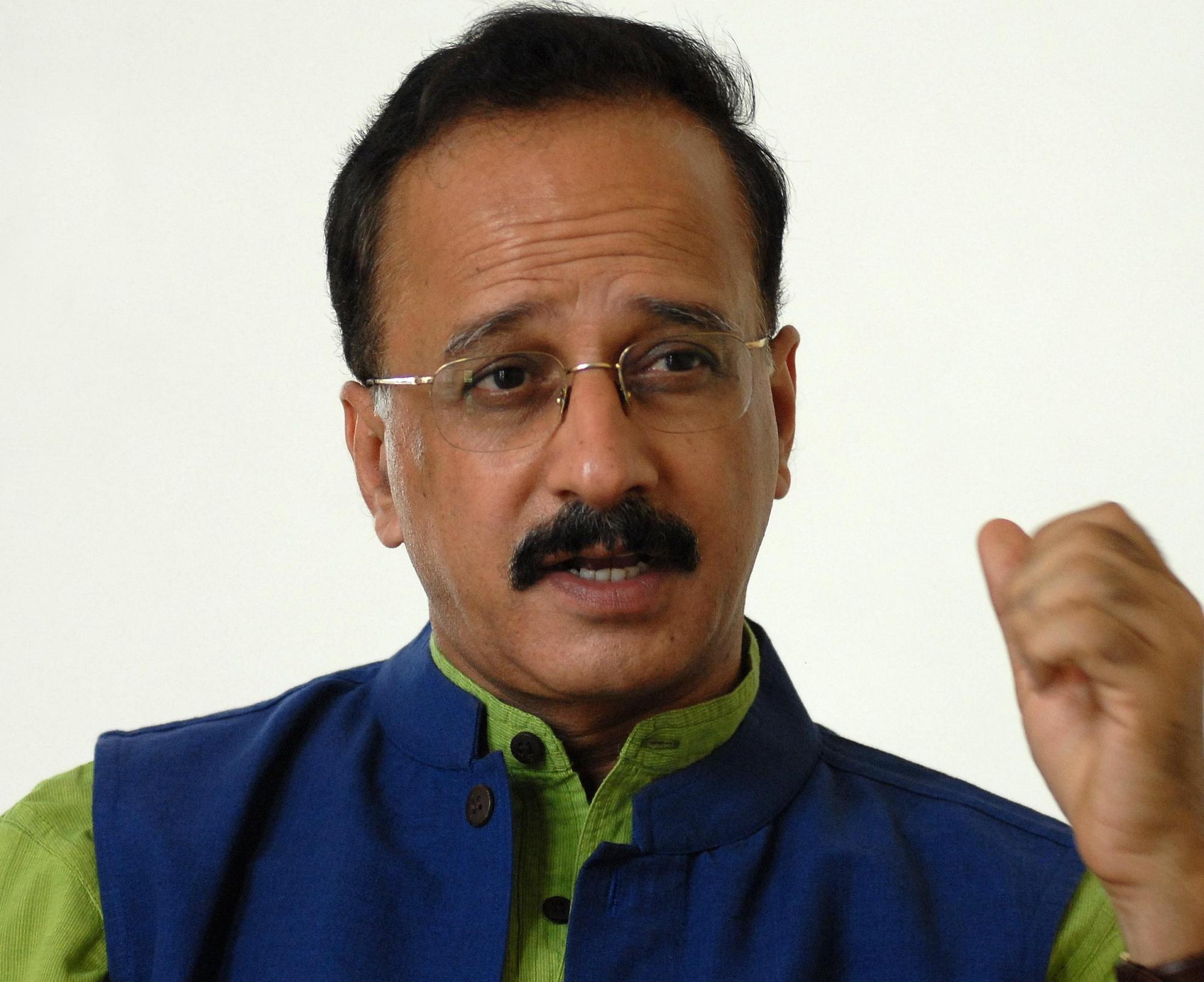
 You can find the talk listed at the bottom of this page. It can be playing directly by clicking on it. You can also find it in iTunes, if you look for a podcast under the name of Tony Mitra, and go through the list of episodes. It can be identified by the logo at left.
You can find the talk listed at the bottom of this page. It can be playing directly by clicking on it. You can also find it in iTunes, if you look for a podcast under the name of Tony Mitra, and go through the list of episodes. It can be identified by the logo at left.


